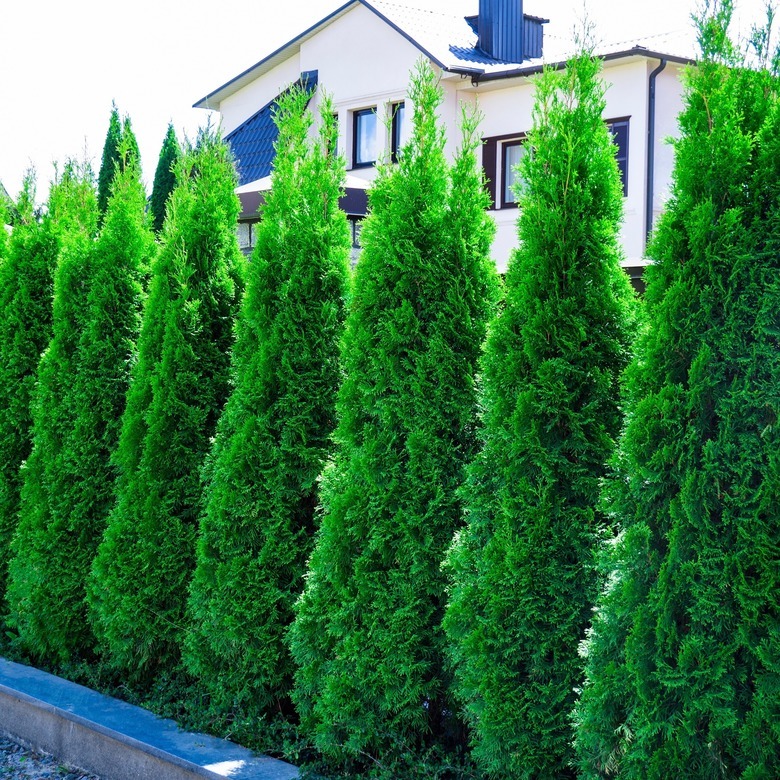Thuja occidentalis 'Smaragd' is a narrow upright selection of arborvitae with fine branchlets and glossy, emerald-green foliage that does not become bronze in winter. It is an extremely popular plant for use in hedgerows and borders. After 10 years in the landscape, a specimen will be considered mature at roughly 6 feet (2 m) tall and 18 inches (50 cm) wide, rate of growth approaching 1 foot (30 cm) per year.
This cultivar originated as a seedling selected in 1950 by D. T. Poulsen Nursery, Kvistgaard Denmark. It is marketed in the U.S. under the trade name Emerald Green„¢, a designation that is generally rejected by nomenclature purists.
